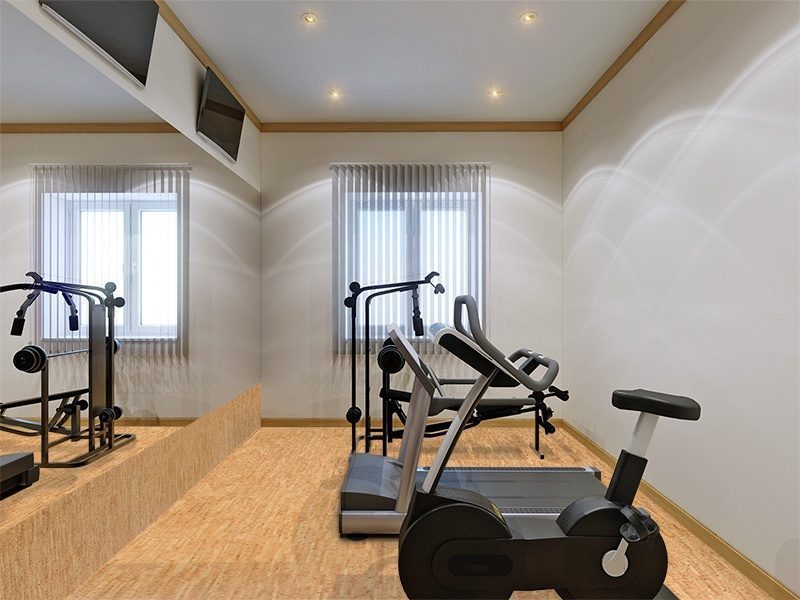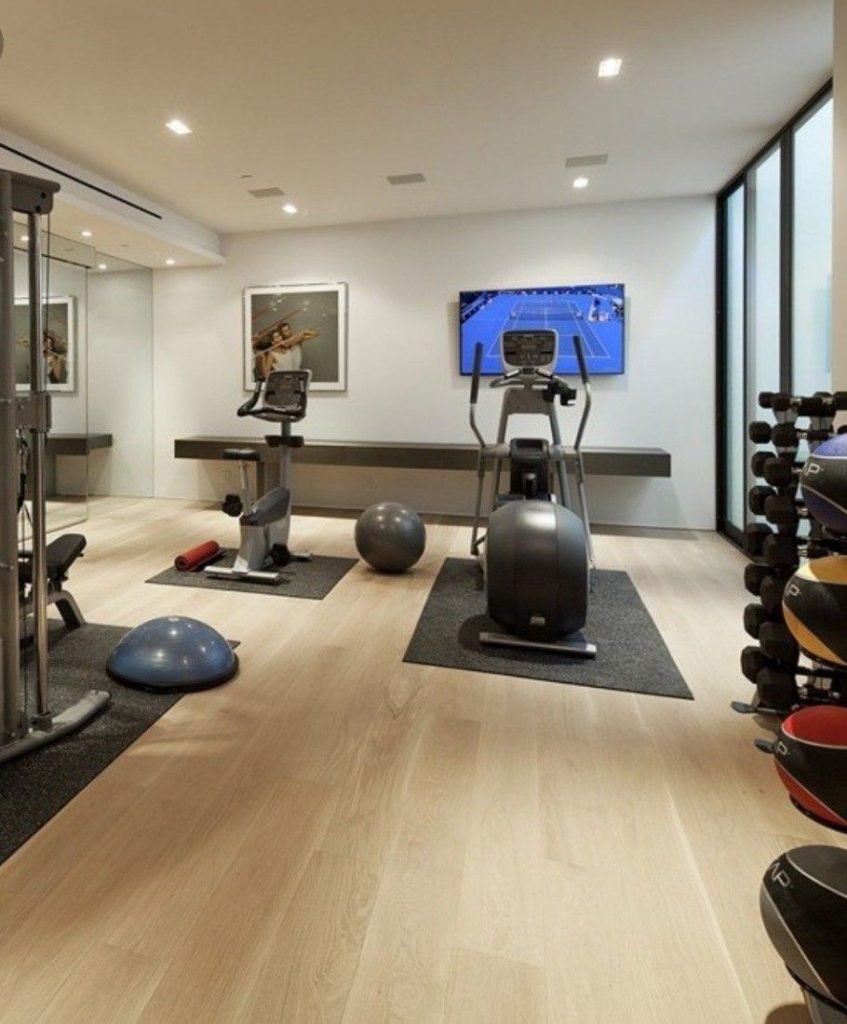Creating a home exercise room is a great idea. You can work out anytime. But choosing the right flooring is very important. The floor can affect your workouts. It can also keep you safe. Let’s explore the best types of flooring for your home exercise room.

Credit: www.icorkfloor.com
Why is Flooring Important?
The flooring in your exercise room plays a big role. It affects comfort, safety, and performance. Here are some reasons why flooring matters:
- Safety: Good flooring helps prevent slips and falls.
- Comfort: Soft flooring can make workouts more comfortable.
- Support: Some floors give support to joints during workouts.
- Noise Reduction: Certain floors can reduce noise from exercises.
Types of Flooring for Exercise Rooms
There are many options for flooring. Each type has its own benefits. Here are some popular choices:
1. Rubber Flooring
Rubber flooring is very popular in gyms. It is durable and easy to clean. Here are some advantages:
- Good for weightlifting.
- Provides good grip.
- Reduces noise and vibration.
Rubber flooring comes in rolls and tiles. You can choose the style that fits your room.
2. Foam Flooring
Foam flooring is soft and comfortable. It is great for yoga and stretching. Here are some benefits:
- Lightweight and easy to install.
- Provides cushioning for joints.
- Available in many colors and designs.
However, foam can wear out quickly. It may not work well for heavy weights.
3. Carpet Tiles
Carpet tiles are another option. They are soft and warm. Here are some points to consider:
- Good for low-impact exercises.
- Easy to replace if damaged.
- Helps reduce noise.
But carpet can absorb moisture. This can lead to odors over time.
4. Vinyl Flooring
Vinyl flooring is a versatile choice. It is easy to clean and comes in many styles. Here are the pros:
- Water-resistant and durable.
- Good for high-impact workouts.
- Available in many colors and patterns.
However, it may not provide enough cushion for some exercises.
5. Hardwood Flooring
Hardwood flooring is beautiful and classic. It is great for aesthetics. Here are some benefits:
- Long-lasting and easy to clean.
- Can add value to your home.
- Good for dancing and aerobics.
But hardwood can be slippery. It may not provide enough support for heavy workouts.
Choosing the Right Flooring
When choosing flooring, think about your workouts. Here are some questions to ask:
- What type of exercises will you do?
- Do you need cushioning for your joints?
- Is noise reduction important for you?
- How much maintenance can you handle?
Answering these questions will help you choose. Each type of flooring has its pros and cons. Think about what is best for you.
Installation Tips
Installing flooring can be simple. Here are some tips:
- Measure your space before buying.
- Read the installation instructions carefully.
- Consider hiring a professional if needed.
- Allow the flooring to acclimate before installation.
Proper installation is key. It ensures your flooring lasts longer.

Credit: refloor.com
Maintaining Your Flooring
Taking care of your flooring is important. Here are some easy maintenance tips:
- Clean regularly to avoid dirt buildup.
- Use a damp mop for vinyl and rubber.
- Replace damaged tiles or sections.
- Avoid harsh chemicals that can damage the floor.
Good maintenance keeps your exercise room looking great.
Conclusion
Choosing the right flooring for your home exercise room is important. It affects your workouts and safety. Consider different types of flooring. Think about your workout needs. Rubber, foam, carpet tiles, vinyl, and hardwood are all options. Each has its strengths and weaknesses.
Take your time when making a choice. Measure your space, think about maintenance, and choose wisely. With the right flooring, you can enjoy your home exercise room. You will be comfortable and safe while working out.
Now you are ready to create your perfect exercise space. Happy exercising!














Leave a Review